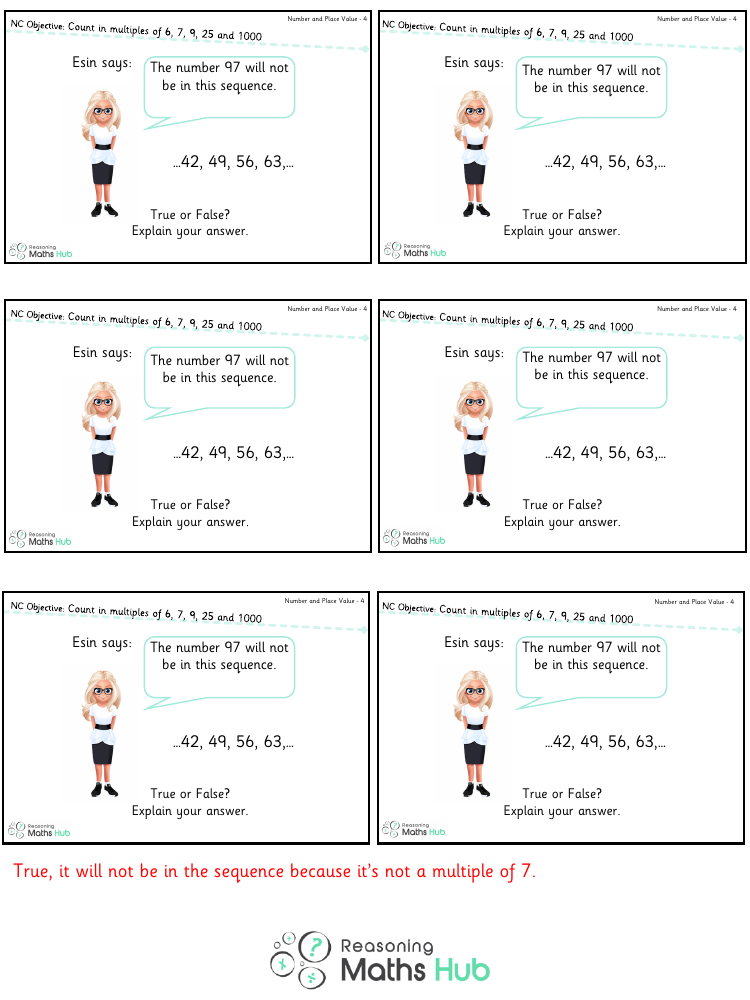Count in multiples of 6, 7, 9, 25 and 1000 3 - Reasoning

Maths Resource Description
The reasoning question presented requires students to determine whether the number 97 would appear in a sequence of multiples of 7, as illustrated by the sequence provided by Esin: 42, 49, 56, 63, and so on. The correct answer is True; the number 97 will not be in this sequence. The reasoning behind this answer lies in the nature of multiples of 7. Each number in the given sequence is a product of 7 and an integer. Since 97 cannot be divided evenly by 7 (97 divided by 7 results in a quotient of 13 with a remainder of 6), it is not a multiple of 7 and thus would not appear in Esin's sequence. Multiples of 7 increase by 7 with each step, and as 97 is not reached by this consistent increment, it is excluded from the pattern.
To further explain, we can look at the numbers immediately before and after 97 in relation to the sequence. The multiple of 7 prior to 97 is 91 (7 x 13), and the multiple following it is 98 (7 x 14). Since 97 falls between these two multiples without being divisible by 7 itself, it confirms that 97 is not part of the sequence of multiples of 7. This type of reasoning exercise helps students understand the concept of multiples and reinforces their knowledge of number sequences and place value.